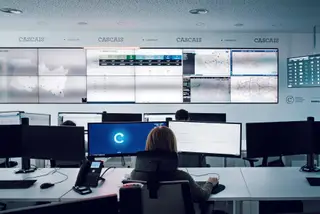The wall has almost two dozen monitors. Through them works the urban “ecosystem”. The C3 – Cascais Control Centre is the brain of the village, where all intelligent communication is processed. If a new hole appears in a street, the problem is likely to be solved within hours. How? With an algorithm and a bucket of concrete. Seen as one of the most intelligent and most evolved cities in the world, the concept of smart city in Cascais focuses on three aspects: environment, energy and mobility. The communication is effective: the MobiCascais app conducts the integrated management of the means of transportation and the FixCascais app is used to report issues related to public space. “We apply technology to serve the interaction of the citizen with the city”, says Marco Espinheira, director of the Future at Cascais City Hall.

Information arrives at the Control Centre in real time. The city's recycling bins are equipped with sensors. The traffic lights are smart. “Rubbish trucks only leave the central warehouse on pre-established routes on which all the recycling bins are full. We manage to collect 20% more with less than half the number of trucks. We have reduced CO2 emissions by 350 tons and saved 600,000 euros per year.” Concepts such as bike sharing, car sharing and scooters are now part of our daily vocabulary. “We were the first to adopt the concept of mobility as a service. Citizens can use all means of transportation upon payment of a monthly fee”, says the mayor.
ÁGUEDA, LIVING LAB
Further north, in Águeda, the concept of smart city took shape in 2014. Known as the “city of bicycles”, Águeda is a pioneering municipality when it comes to implementing this concept. As in Cascais, the secret lies in effective communication. Incidents and information are reported to the city's operational centre in real time.

